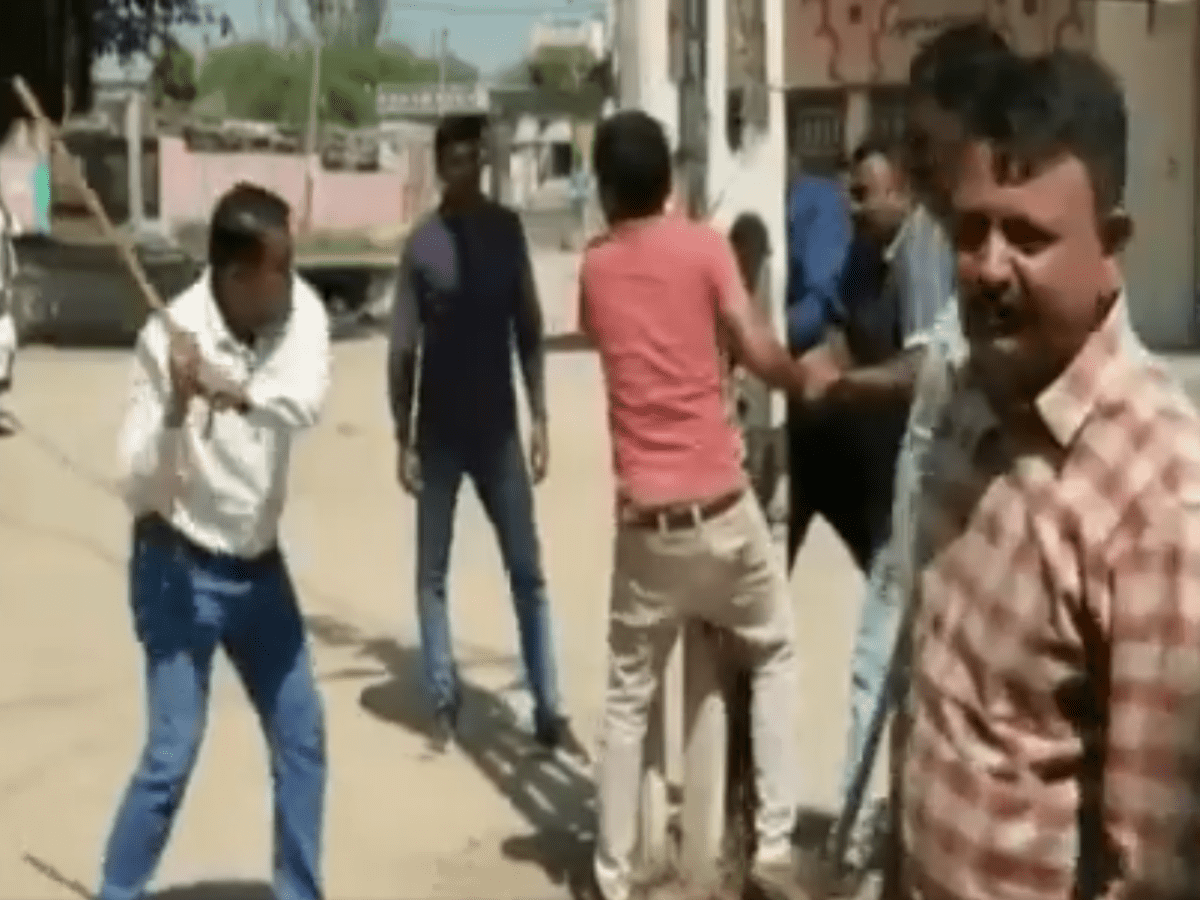
A chief judicial magistrate (CJM) informed the Gujarat High Court that the recordings of the public flogging of Muslim men in the Kheda district in October last year are of low quality and as a result, not all the cops and victims could be recognized from them.
According to the CJM’s report, only four police officers could be named: two who physically assaulted the victims, one who was caught holding their hands at the time of the assault, and one who was seated in front of the crowd on a chair.
The police officers dressed in civil attire videotaped the beating of these individuals and posted it online. Cops could be seen thrashing the petitioners with lathis as they were tied to a post in the footage. A crowd was there during the entire incident, cheering on the police and yelling numerous slogans, including “Vande Mataram.”
Five members of the Malek family who were brutally thrashed by the policemen in public view for allegedly pelting stones at a crowd during a Navaratri event in Undhela village, petitioned the Gujarat High Court, over the violation of the Supreme Court’s order for violation of guidelines laid down for arresting a person.
The court directed the CJM of the Nadia district to review the pen drives and other evidence connected to the videos of the police beating up Muslim men in full view of the public.
The accused policemen have been identified as AV Parmar, DB Kumavat, Kanaksingh Laxmen Singh, and Raju Rameshbhai Dabhi, reported Bar and Bench.
“Watching all the videos it could be made out that the videos were captured by some of the people standing in the public, which is controlled back by the police personnel in uniforms,” the report says.
“The face is not shown or the side face can be seen in the videos and the videos are captured from the sideways, which cannot be zoomed in and are blurred in enlarging pixels due to the quality of the videos. The pictures are blurred on zooming in and videos are taken from a distance, so it is difficult to ascertain the persons amongst the respondents as well as applicants in the videos and the photographs,” the CJM report states.
